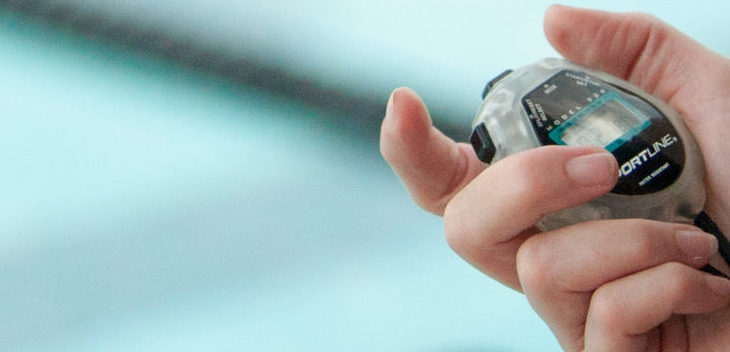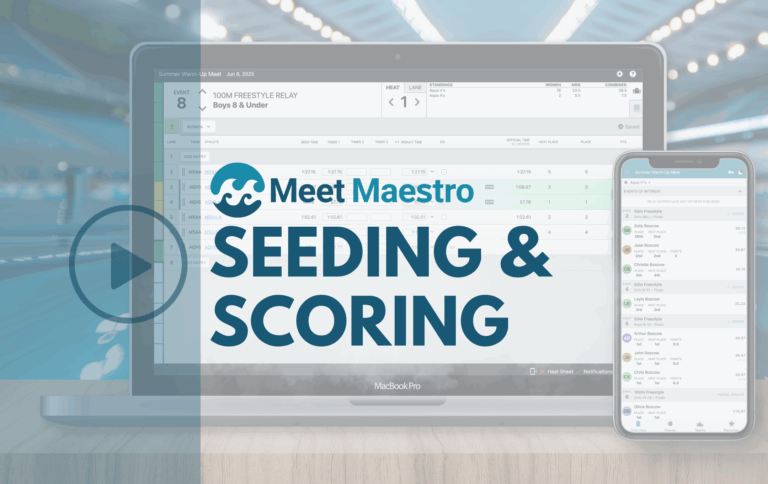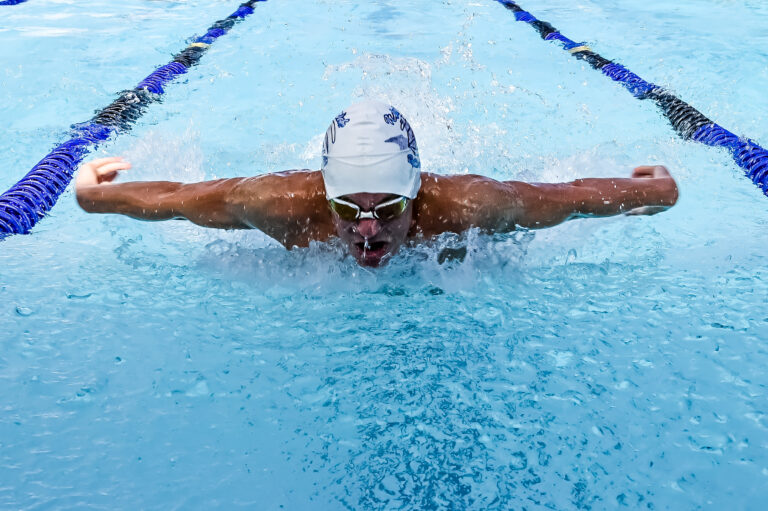
As a swim coach or meet organizer, you juggle countless responsibilities to ensure your swimmers perform at their best. Amidst the whirlwind of tasks, understanding the intricacies of recording, measuring, and converting swim times may seem overwhelming. However, accurately tracking and converting swim times is crucial for qualifying events, proper seeding, and, ultimately, your team’s success.
While times and pool lengths form the foundation of swim time data, there’s more to the story. To truly support your swimmers, you must navigate the nuances of swim time conversions, ensuring accuracy and consistency across various pool sizes and event types. Master these concepts, and you can better assess your team’s performance, advocate for your swimmers, and help them shine in any competition. Here are five essential insights to consider.
Insight #1: Understand the Significance of Swim Time Conversions
Unlike track events, where timing is relatively straightforward, swim meets introduce complexities that demand more than just raw measurements. Here’s why swim time conversions are so important:
- Pools vary in length: Whether it’s 25 yards, 25 meters, or 50 meters, pool sizes can differ significantly, making direct comparisons challenging.
- Conversions are complex: You can’t simply multiply times by a fixed factor to convert between pool lengths; factors like fatigue and turns must be considered.
- Consistency is key: Standardized conversion formulas ensure fair comparisons across different meets, leagues, and competition types.
Accurate swim time conversions enable coaches and meet organizers to:
- Evaluate swimmer performance across different pool sizes
- Seed swimmers appropriately for upcoming meets
- Identify areas for improvement in training and technique
- Track progress over time and set realistic goals
- Compare swimmers from different teams and regions
By prioritizing precise swim time conversions, you create a level playing field for your swimmers and equip yourself with the insights needed to make informed decisions about their development and success.
Insight #2: Master the Art of Converting Swim Times from Yards to Meters
Let’s dive into an example to illustrate the conversion process. Suppose Swimmer A completes a 50-yard breaststroke in a 25-yard pool in 34.45 seconds. How would they perform in a 50-meter breaststroke in a 25-meter pool?
While a simple distance conversion (multiplying by 1.0936) might seem appropriate, it doesn’t account for the impact of the increased distance on the swimmer’s pace. As a general rule, most swim software, including SwimTopia, uses a standard conversion factor of 1.11 when converting between 25-yard and 25-meter times. This factor includes the distance conversion (1.0936) and an additional 0.0164 to account for the pace change due to the extra distance.
Related: 11 Features You Need in Swim Team Management Software in 2024
Using this standard conversion factor, Swimmer A’s 34.45Y (short course yards) time would convert to a 38.24S (short course meters) time. It’s essential to note that this converted time is an estimate and may vary based on the swimmer’s individual characteristics and race conditions.
When converting swim times, it’s important to consider:
- The specific distances and course types involved (e.g., short course yards to short course meters)
- The impact of the distance change on the swimmer’s pace
- The individual characteristics of the swimmer (e.g., sprinter vs. distance swimmer)
- The race conditions and level of competition
Take these factors into account and use standardized conversion methods to generate more accurate estimates of a swimmer’s potential performance in different pool sizes and event types.
Insight #3: Leverage Swim Management Software for Accurate Swimmer Profiles
While fine-tuning conversion factors is valuable, it’s equally important to use widely accepted standards. Most swim meet management software solutions employ a standard conversion factor of 1.11 for 25-yard to 25-meter conversions. Adhering to these standards ensures consistency across teams, leagues, and organizations, enabling fair comparisons and accurate seeding.
Comprehensive management software simplifies data management by automatically applying consistent conversions and maintaining participant records. This not only saves coaches time but also ensures everyone follows the same best practices, facilitating equitable comparisons throughout the organization.
The right swim management software offers several key benefits for tracking and converting swim times:
- Automated data entry and conversion, reducing the risk of human error
- Consistent application of standardized conversion factors
- Centralized storage of swimmer profiles and performance data
- Easy access to historical data for tracking progress over time
- Integration with meet management tools for seamless event organization
Leverage the power of swim management software to streamline the process of collecting, converting, and analyzing swim time data, ultimately providing a more accurate and comprehensive view of each swimmer’s abilities and potential.
Insight #4: Recognize the Difference Between Estimates and Measurements
When discussing swim times, it’s crucial to distinguish between measurements and estimates. A measurement represents a precise, definite time for a specific race, while a conversion provides an estimate based on a swimmer’s performance in another course.
The 1.11 conversion factor and other widely accepted formulas are valuable tools for predicting race times, but they are not exact. True measurements can only be obtained by timing a swimmer in a specific course length with the exact number of turns.
It’s essential for coaches and swimmers to understand the limitations of converted times and to use them as a guide rather than a definitive prediction. Factors such as training, race strategy, and mental preparation can all influence a swimmer’s actual performance in a given event.
To make the most of swim time conversions, coaches should:
- Emphasize the importance of consistent training and technique across different pool sizes
- Encourage swimmers to compete in a variety of events and course types to gain experience
- Use converted times as a starting point for goal-setting and progress tracking
- Combine converted times with other performance metrics and observations to create a comprehensive assessment of each swimmer’s abilities
Maintain a balanced perspective regarding the role of swim time conversions to help your athletes develop a strong foundation of skills and confidence that translates to success in any competition environment.
Insight #5: Avoid Rounding Errors by Adhering to Swimming Standards
Swim times are typically measured and estimated to the hundredth of a second. However, conventional rounding rules don’t apply. Instead, the swimming community uses banker’s rounding or statistician’s rounding. In this system, when the thousandth’s place is five or higher, the hundredth place rounds up only if it’s an odd digit. For example, 20.015 would round up to 20.02, while 20.025 would remain 20.02.
Related: Efficiency and Performance: How Effective Swim Manager Software Transforms Team Dynamics
Adhering to these rounding standards ensures consistency and accuracy in swim time data, particularly when converting between different course types. Coaches and meet organizers should familiarize themselves with these rules and ensure that any software or tools they use for swim time management apply them correctly.
Unlock Your Team’s Potential With the Right Software Integrations
As a swim coach or meet manager, your role extends beyond training and organizing—you’re also a data analyst. The right swim meet management software streamlines the process of managing meets, recording data, and generating accurate swim time conversions and estimates that adhere to widely accepted standards.
A comprehensive platform can provide a suite of features designed to support coaches and meet organizers in their quest for swim time accuracy. The platform can help you simplify your workload, ensure data accuracy, and empower your swimmers to reach their full potential.
With Meet Maestro, you can focus on what matters most—developing your swimmers’ skills, fostering a love for the sport, and celebrating achievements. The software takes care of the complex data management tasks, giving you the confidence and insights needed to make informed decisions and guide your team to success.Don’t let the challenges of swim time conversions hold your team back. Dive into the world of Meet Maestro and experience the difference that accurate, consistent data can make in your swimmers’ lives. Take the first step towards unlocking your team’s full potential, and let’s get started.


